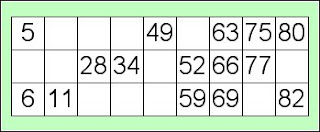
The most logical one seems to be a “Sandwicherie”. Although French sandwiches do not resemble British ones; a French sandwich is usually a French loaf with savoury filling. Normally baker shops (Boulangerie and/or Pâtisserie) offer these French sandwiches, but in the tourist season they might sell slices of pizzas and small quiches as well. But be aware, bakers open extremely early in the morning, and usually close around 12h00 for a couple of hours. Along the Voie Verte near Chazelle there was a Sandwicherie, but unfortunately this will not re-open this year.
For those who want something not too heavy and warm for lunch, the kebab shop might be worth considering. Again, kebabs here are quite different from the English equivalent. They sell all sorts of kebabs in different guises. There is an “assiette kebab”, a “sandwich kebab” and a “galette kebab”; the assiette is a plate with meat, French fries, green salad and sauce blanche and/or harissa (spicy). The sandwich is identical but does not come with French fries; everything is propped into half a loaf of Turkish bread.
 The galette is again the same as the sandwich, but in stead of bread they use a thin wrap. There is a good kebab shop in Cluny, called Bosphorus”, and every bigger place or even village might host one or more kebab shops.
The galette is again the same as the sandwich, but in stead of bread they use a thin wrap. There is a good kebab shop in Cluny, called Bosphorus”, and every bigger place or even village might host one or more kebab shops.There is also something called “casse-croûte”, which literally means “packed lunch”. It is often displayed on signs (L’Orée-du-Bois, along the Voie Verte), and sometimes it even is the name of the establishment. The menu is simple; there is normally a choice of sandwiches, salads, and French fries with a choice of meat. Our favourite in Cluny is steak-haché frites, a hamburger like piece of (quality) minced meat with French fries. The whole concoction is also available as sandwich steak-haché frites, where everything is propped in between the two halves of a baguette. Still another variation is something called steak-haché au cheval, where the “au cheval” does not stand for the type of meat; the hamburger is topped by a fried egg, which sits on top of the hamburger as if riding a horse (hence “au cheval”). It is safe to eat, even for Brits!
 Of course there also pizzerias and normal restaurants. It is often worth to look out for the plat du jour. Usually restaurants offer a menu du jour (starter, main course and dessert - price range approx. € 13) and a plat du jour (price range under € 10), which is the main course only. Our Monique, the owner of La Terrasse in Cormatin often has Boeuf Bourgignon as plat du jour. In my opinion, and I tried a few in the region, she makes the best within a radius of 30 miles. Another of our favourites at La Terrasse is the salade Bressane, a green salad with maïs and chicken livers. However, most salads there are good quality and big enough for a normal meal.
Of course there also pizzerias and normal restaurants. It is often worth to look out for the plat du jour. Usually restaurants offer a menu du jour (starter, main course and dessert - price range approx. € 13) and a plat du jour (price range under € 10), which is the main course only. Our Monique, the owner of La Terrasse in Cormatin often has Boeuf Bourgignon as plat du jour. In my opinion, and I tried a few in the region, she makes the best within a radius of 30 miles. Another of our favourites at La Terrasse is the salade Bressane, a green salad with maïs and chicken livers. However, most salads there are good quality and big enough for a normal meal.But the real die-hards, craving for fast food, will have a hard time in this part of France. The nearest McDonald’s is either in Mâcon or in Chalon, hence approx. 35 km from here. Saône-et-Loire, our Département, boasts 6 McDonald’s outlets. Do you think that this is much? Saône-et-Loire covers an area of 8500 square kilometers and a population of 550000. Amsterdam, the capital of the Netherlands has a (land) area of 220 square kilometres and 750000 inhabitants. For those who love statistics:
Saône-et-Loire has 1 McDomald’s outlet per 90000 inhabitants; Amsterdam has 1 per 47000, hence a density twice as high.
 Saône-et-Loire has 1 outlet per 1400 square kilometers, Amsterdam 1 per 14 square kilometer, hence a density 100 x as high.
Saône-et-Loire has 1 outlet per 1400 square kilometers, Amsterdam 1 per 14 square kilometer, hence a density 100 x as high.As far as I am concerned, I will stick to the local food; I was never keen on beef burgers anyway!
The website of La Tuilerie de Chazelle






















